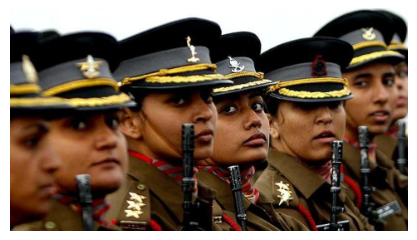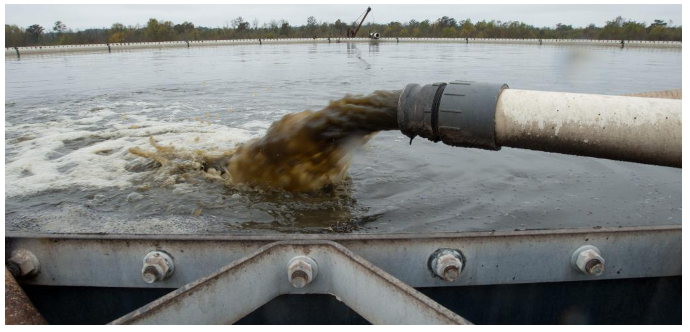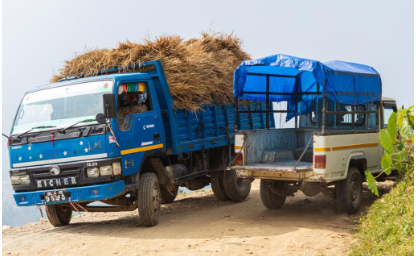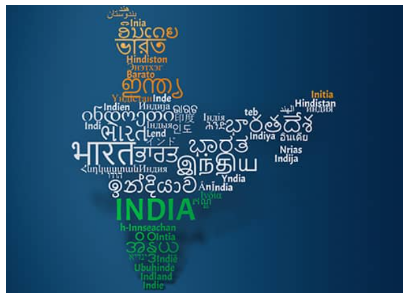Tuesday, 5th March 2024
2022 Update on Indian Leopard Population
In News: The Ministry of Environment, Forest and Climate Change has issued a 2022 report on the Status of Leopards in India.

Leopard Population Status in India (2022)
- Overall Population Growth
- India's leopard population increased by 8% from 12,852 in 2018 to 13,874 in 2022.
- Approximately 65% of leopards are found outside protected areas in the Shivalik landscape.
- Regional Variation
- Central India witnessed a stable or slightly growing leopard population (2018: 8071, 2022: 8820).
- Shivalik hills and Gangetic plains experienced a decline (2018: 1253, 2022: 1109).
- Shivalik hills and Gangetic plains show a 3.4% decline per annum, while Central India and Eastern Ghats exhibit a 1.5% growth rate.
- State-Level Distribution
- Madhya Pradesh has the highest leopard population (3,907), followed by Maharashtra, Karnataka, and Tamil Nadu.
- Odisha and Uttarakhand witnessed a decline in leopard numbers.
- Benefits From Tiger Conservation
- Central India and Eastern Ghats, under tiger conservation efforts, house the largest growing leopard population.
- Leopard densities are higher in Tiger Reserves compared to areas outside Protected Areas.
- Common Threats
- Common threats include poaching of prey, targeted poaching for skins and body parts, and habitat loss due to human activities.
- Odisha reported the seizure of 59 leopard skins from wildlife smugglers between 2018 and 2023.
- Road accidents are a significant cause of leopard fatalities.
Leopard Facts
- Scientific Name
- Panthera pardus
- About
- The leopard is the smallest of the Big Cat family and is known for its adaptability in various habitats.
- Nocturnal in nature, it feeds on smaller herbivores like chital, hog deer, and wild boar.
- Habitat
- Wide range from sub-Saharan Africa to Southeast and East Asia.
- Indian leopard (Panthera pardus fusca) is widely distributed on the Indian subcontinent.
- Threats
- Poaching for illegal trade, habitat loss, and human-leopard conflicts.
- Conservation Status
- IUCN Red List: Vulnerable
- CITES: Appendix-I
- Indian Wildlife (Protection) Act, 1972: Schedule-I
|
UPSC Previous Year Questions Prelims (2012) Q. Consider the following:
Which of the above are naturally found in India? (a) 1, 2 and 3 only Ans: (b) |
Source: IE
India's Battle Against Single-Use Plastics
In News: India pledged to eliminate Single-Use Plastics (SUP) by 2022. However, three years beyond the commitment, although there has been some advancement through the prohibition of specific SUP items, obstacles still remain.
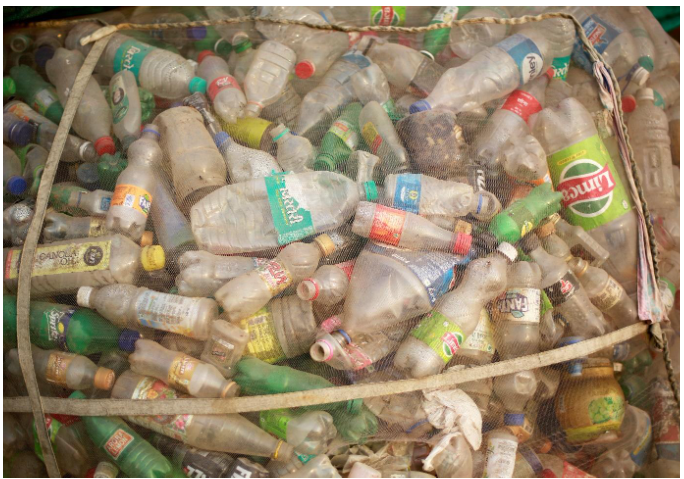
Key Highlights of UNEA-6 Report on Single-Use Plastics (SUP)
- Street Food Sector's SUP Reliance
- Street food in India extensively uses single-use plastics, contributing significantly to waste management challenges.
- Benefits of Reuse System
- Cost savings for vendors and customers.
- Significant waste reduction in packaging.
- Potential 21% return on investment with a 2-3 year payback period.
- Additional Considerations
- Material choice, retention time, return rate, deposit amounts, and government incentives are crucial for system optimization.
- Recommendation
- Adoption of a reusable packaging system for India's street food sector for economic and environmental sustainability.
Understanding Single-Use Plastic
- Definition
- Refers to plastic items intended for one-time use before disposal or recycling.
- Current Landscape
- India banned 19 single-use plastic items in 2021, addressing only a fraction of the issue.
- Extended Producer Responsibility (EPR) policy covers remaining items, but challenges persist.
- India's Share in Plastic Production
- 13th largest investor in single-use plastic polymer production globally.
- 3rd globally in single-use plastic waste contribution, with 94th rank in per capita waste.
- Mismanagement of Plastic Waste
- India mismanages 85% of its plastic waste, mostly single-use, leading to environmental harm.
Challenges in Tackling Single-Use Plastic
- Lack of Alternatives
- Limited availability of cost-effective, convenient alternatives.
- Economic Considerations
- Affordability and convenience make single-use plastics preferred.
- Transition to alternatives may require substantial investments.
- Infrastructure
- Inadequate waste management infrastructure exacerbates plastic pollution.
- Policy and Regulation
- Enforcing regulations and compliance remains challenging.
- Consumer Behavior
- Changing ingrained habits and raising awareness is crucial.
- Impact on Livelihoods
- Consider socio-economic implications for affected communities during phase-out.
Measures to Address Single-Use Plastic
- Enforce Laws
- Strengthen inspection teams, equip with necessary instruments, and ensure reporting on inspections.
- Mandate Disclosure
- CPCB and MOEFCC should mandate regular updates on environmental compliance, fines, and shutdowns.
- Ban Micron Business
- Ban all carry bags, irrespective of thickness, to reduce environmental impact.
- Invest in Alternatives
- Address scarcity of alternatives by investing in research and development.
Global Approaches to SUP
- UNEA Resolution
- 124 countries, including India, signed a resolution for a legally binding agreement on plastic life cycle management.
- Countries with Plastic Bans
- Bangladesh, New Zealand, China, US states, European Union, among others.
Conclusion
India's fight against single-use plastics requires coordinated efforts from policymakers, industries, and citizens. While progress has been made, addressing gaps in enforcement, awareness, and infrastructure is crucial for a cleaner, greener future.
|
UPSC Previous Year Questions Prelims (2019) Q. Why is there a great concern about the ‘microbeads’ that are released into environment? (a) They are considered harmful to marine ecosystems. Ans: (a)
Therefore, option (a) is the correct answer. |
Source: DTE
Gene Therapy for Hemophilia A
In News: During the National Science Day 2024 program, the Union Minister of Science & Technology announced that India initiated its inaugural human clinical trial for gene therapy targeting hemophilia A (FVIII deficiency) at Christian Medical College (CMC) Vellore.
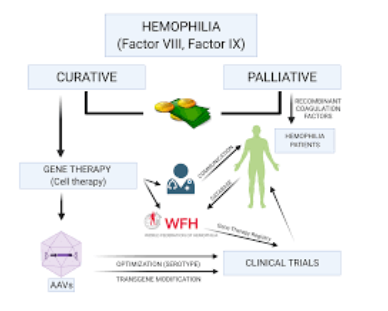
Hemophilia A
- Overview
- Hemophilia is a rare group of bleeding disorders caused by congenital deficiencies in clotting factors.
- Hemophilia A is the most prevalent form, resulting from a deficiency in factor VIII, a crucial blood clotting protein.
- Causes
- Primarily inherited through an X-linked recessive pattern.
- Males inheriting a defective X chromosome from their mother develop hemophilia A.
- Females typically do not experience symptoms due to the presence of two X chromosomes.
- Hemophilia A in females occurs if they inherit two defective copies, one from each parent.
- Symptoms
- Severity varies based on factor VIII activity in the blood.
- Common symptoms include easy bruising, excessive bleeding from minor injuries, joint bleeding, and bleeding after surgery or dental procedures.
- Treatment
- Involves replacing the missing clotting factor through injections of clotting factor concentrates.
- Two main types: Plasma-derived Factor Concentrates and Recombinant Factor Concentrates.
- Gene therapy is gaining prominence in recent trials, involving the use of lentiviral vectors to insert the FVIII gene into the patient's stem cells.
- Acquired Hemophilia A
- Can be acquired later in life due to auto-antibodies targeting factor VIII.
- Rare and differs from congenital hemophilia A in onset and progression.
National Science Day
- Overview
- Celebrated on 28th February annually to commemorate the discovery of the 'Raman Effect' by Sir Chandrasekhara Venkata Raman in 1928.
- The Raman effect is a method for identifying materials based on light scattering.
- Purpose
- Enhance scientific temper and popularize science.
- Encourage innovative activities and infuse scientific temperament in the masses.
- Foster a positive scientific research culture.
- Theme for 2024
- 'Indigenous Technologies for Viksit Bharat.'
India's Recent Advancements in Science and Technology
- Startup Ecosystem
- Third-largest global startup ecosystem with over 100 unicorns.
- Remarkable entrepreneurial growth.
- Bio-economy Sector
- Extraordinary 13-fold increase in the past decade, reaching USD 130 billion in 2024.
- Global Rankings
- Top five countries for scientific research publications.
- 40th position in the Global Innovation Index (GII).
- Agricultural Initiatives
- Aroma Mission and Purple Revolution transforming agriculture.
- Thriving community of agri-startups.
- Cybersecurity
- Development of Maya OS by the Defence Research and Development Organisation.
- Bolstered cybersecurity measures against online threats.
- Intellectual Property Landscape
- Surge in patent filings, surpassing 90,000.
- Highest in two decades.
- Space Exploration
- Successful Chandrayaan-3 Mission showcasing India's space exploration prowess.
- Paving the way for the historic Gaganyaan mission.
Related Government Initiatives
- India Semiconductor Mission
- Artificial Intelligence Mission
- Unified Payment Interface
- INS Vikrant
- Bharat 6G project
- Initiative on Critical and Emerging Technology (India and US)
|
UPSC Previous Year Questions Mains (2020) Q. How is science interwoven deeply with our lives? What are the striking changes in agriculture triggered by science-based technologies? |
Source: PIB
A protoplanetary Disk
In News: The James Webb Space Telescope (JWST) has observed that a young star's protoplanetary disk in the Orion Nebula is experiencing significant annual losses of hydrogen.
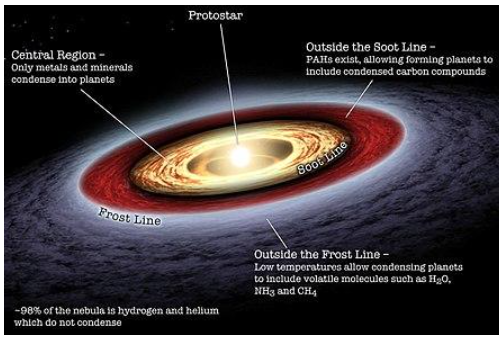
About Protoplanetary Disk
- A protoplanetary disk is a celestial structure composed of gas (99% by mass) and dust (1%), encircling a newly formed star, with the potential to give rise to planets.
- These disks, ranging in mass from 0.001 to 0.3 Solar masses and in size from several tens to almost 1,000 Astronomical Units, are common outcomes of the star formation process.
- Stars originate from cold interstellar molecular clouds, wherein the primary component is hydrogen (H2), and as these clouds collapse into protostars due to gravity, a rotating disk forms from the remaining matter.
- Once the star completes its accretion phase, the residual disk remains in orbit around it, containing gas, dust, and organic molecules from the original molecular cloud.
- The chemical composition of the protoplanetary disk plays a pivotal role in determining the makeup of the future planets emerging from it.
- Typically, protoplanetary disks disperse within 2–3 million years due to processes such as matter coalescence into planets and photoevaporation induced by stellar radiation.
Source: LS
OPEC+ Extends Oil Production Cuts
In News: Recently, OPEC+ nations, spearheaded by Saudi Arabia and Russia, reached a consensus to prolong the voluntary reduction in oil production initially declared in 2023.
Overview of OPEC+
- Formation and Origin
- OPEC+ is a coalition of oil-exporting nations formed at the end of 2016.
- The objective was to establish a cooperative framework between OPEC and non-OPEC producers for consistent collaboration.
- Purpose
- The primary goal is to collectively regulate crude oil production, ensuring stability in the global oil market.
- Significance
- OPEC+ holds sway over 40% of worldwide oil supplies and more than 80% of proven oil reserves.
- Core members are from OPEC, primarily representing Middle Eastern and African nations.
- Membership
- Consists of OPEC countries and additional members such as Azerbaijan, Bahrain, Brunei, Kazakhstan, Russia, Mexico, Malaysia, South Sudan, Sudan, and Oman.
Organization of the Petroleum Exporting Countries (OPEC)
- Mission
- To coordinate and harmonize petroleum policies among member nations.
- Ensuring stability in international oil prices by minimizing harmful fluctuations.
- Formation
- Established in Baghdad, Iraq, in September 1960, with the initial agreement signed by Iran, Iraq, Kuwait, Saudi Arabia, and Venezuela.
- Current membership expanded to include Algeria, Congo, Equatorial Guinea, Gabon, Libya, Nigeria, and the United Arab Emirates.
- Headquarters
- Located in Vienna, Austria.
Source: TH
Yars Missile
In News: The Russian Ministry of Defence has recently declared the successful test firing of the Yars intercontinental ballistic nuclear missile.
Yars Missile: A Russian Intercontinental Ballistic Missile
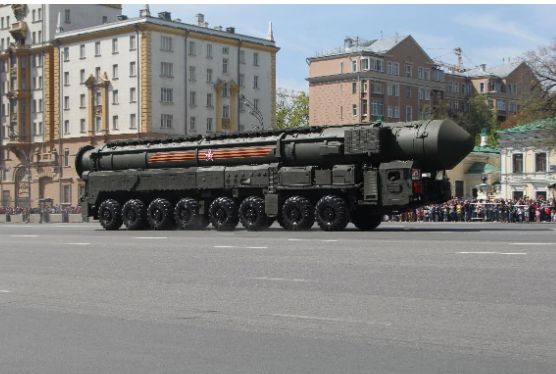
The Yars missile, also known as RS-24 or SS-29, is a formidable Russian-made intercontinental ballistic missile (ICBM) renowned for its advanced capabilities and design features.
Key Features
- Three-Stage Solid Propellant: Yars operates on a three-stage solid propellant mechanism, enhancing its efficiency and reliability.
- MIRV-Capable (Multiple Independently Targetable Reentry Vehicles): The missile is equipped with MIRV technology, enabling it to carry multiple independently targetable warheads, each capable of striking different objectives.
- Modified Topol-M System: Yars is a modified version of the Topol-M missile system, showcasing advancements and improvements over its predecessor.
- Dimensions: With a length of 23 meters, the missile can be launched from either a silo or a mobile launcher, providing tactical flexibility.
- Impressive Range: Yars boasts an impressive operational range of 10,500 km, allowing it to cover vast distances.
- Launch Weight: The missile's launch weight is recorded at 49,600 kg, reflecting its robust construction.
- MIRVs with Thermonuclear Warheads: Yars can be armed with up to 10 MIRVs, each containing a thermonuclear warhead with a substantial payload of 300 kilotons.
- Manoeuvrability and Decoy Deployment: Notably, the missile possesses the capability to manoeuvre during flight, enhancing its evasive maneuvers. Additionally, it can deploy both active and passive decoys, confounding modern missile defense systems and bolstering its strategic advantage.
Source: HT
Grey Zone Warfare
In News: In discussions about China and Taiwan, the term 'grey zone warfare' emerges to describe Chinese actions in the vicinity of the island that China asserts its sovereignty over.
Understanding Grey Zone Warfare
- Definition
- Grey zone warfare refers to a vague, intermediate space existing between direct conflict and peace in the realm of international relations.
- Broad Description
- It involves exploiting the operational space between peace and war, utilizing coercive actions that stay below the threshold warranting a conventional military response.
- Methods and Activities
- Utilization of proxies for kinetic action or changes in territorial status quo through coercion.
- Implementation of non-kinetic subversive actions like cyberattacks, economic coercion, disinformation campaigns, election meddling, and weaponization of migrants.
Characteristics of Grey Zone Warfare
- Below Threshold Actions
- Grey zone elements remain below the threshold justifying a military response, often employing non-military tools.
- Gradual Unfolding
- Activities in grey zone warfare unfold gradually over time rather than involving bold, all-encompassing actions.
- Attributability Challenges
- Many grey zone activities lack attributability, aiming for plausible deniability of actions. However, open and attributable actions are justified using legal and political arguments.
- Recruitment of Support
- Aggressors recruit other countries to their point of view, especially in cases where actions are open and attributable.
- Targeting Vulnerabilities
- Grey zone campaigns specifically target vulnerabilities in the countries they aim to influence.
Source: IE
Burkina Faso - Edukemy Current Affairs
In News: Recently, approximately 170 individuals were subjected to "execution" in assaults on three villages in northern Burkina Faso.
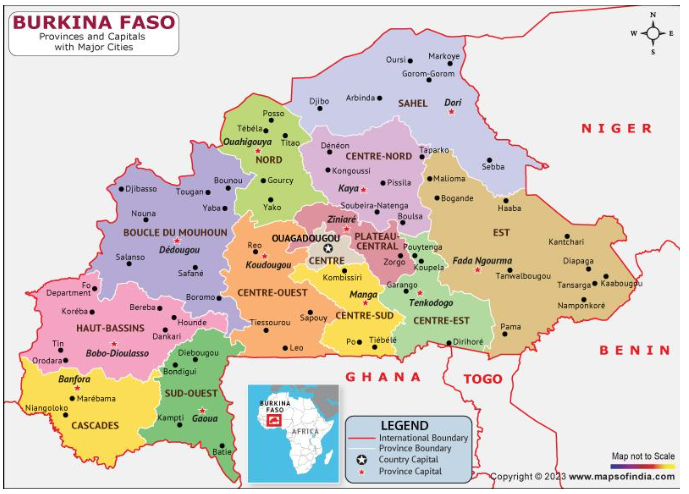
Overview of Burkina Faso
- Geographical Position
- Landlocked country in western Africa.
- Straddles the Prime Meridian, encompassing territories in both Eastern and Western Hemispheres.
- Shares borders with Mali, Niger, Benin, Togo, Ghana, and Ivory Coast.
- Capital and Geography
- Capital: Ouagadougou.
- Predominantly characterized by savannahs, plateaus, and low mountains in the southwest.
- Northern region, known as the Sahel, is arid and desert-like.
- Historical Background
- Formerly known as Upper Volta, Burkina Faso was part of French West Africa since 1896.
- Gained independence from France in 1960 and changed its name to Burkina Faso in 1984.
- Languages
- Official language: French (used in government and education).
- Diverse indigenous languages spoken, with Moore (Mossi) being widely used.
- Economic Profile
- Economy primarily based on agriculture, employing over 80% of the workforce.
- Ranked among the world’s poorest countries.
- Government and Political Landscape
- Republic with a presidential system of government.
- Experienced political transitions and leadership changes.
- Security Situation
- In recent years, Burkina Faso faced security challenges.
- Terrorist groups, including those affiliated with Al-Qa’ida and the Islamic State, initiated attacks in 2016.
- Attacks persisted in the capital in 2016, 2017, and 2018.
- Humanitarian Impact
- By early 2023, insecurity displaced over 2 million people.
- Significant rise in humanitarian needs and food insecurity observed.
Source: NDTV
National Commission for Protection of Child Rights
In News: The National Commission for Protection of Child Rights has requested action against an application accused of spreading explicit and objectionable material, including content specifically aimed at children.
About National Commission for Protection of Child Rights
- Constitution
- The Government of India established the National Commission for Protection of Child Rights (NCPCR) under the Commission for Protection of Child Rights (CPCR) Act, 2005.
- Mandate
- The Commission operates under section 13 of the CPCR Act, 2005, with the mandate to ensure alignment of all laws, policies, programs, and administrative mechanisms with the Child Rights perspective, as outlined in the Constitution of India and the UN Convention on the Rights of the Child.
- It is also tasked with monitoring the proper and effective implementation of key acts, including the Protection of Children from Sexual Offences (POCSO) Act, 2012; Juvenile Justice (Care and Protection of Children) Act, 2015; and Right to Free and Compulsory Education (RTE) Act, 2009.
- Composition
- The Commission comprises a chairperson, recognized for eminence and outstanding contributions to child welfare, and six members.
- At least two of the members must be women.
- The Central Government appoints these members based on their eminence, ability, integrity, and experience in various fields related to child welfare.
- The appointed members serve a term of three years.
- Nodal Ministry
- NCPCR operates under the Ministry of Women and Child Development.
Source: ET
India’s Growth Surprise
In News: India's economic path has consistently exceeded expectations, as indicated by the National Statistical Office's second advance estimate, which unveils a formidable GDP growth of 7.6%, surpassing initial projections.
Factors Contributing to India’s Growth Surprise
- Strengthening Economic Momentum
- Initial GDP estimate of 7.3% in January 2024.
- Second advance estimate surpasses expectations, indicating a robust economic momentum.
- Net taxes emerge as a significant contributor to overall growth.
- Rising Net Taxes and Subsidies
- Comparison of GDP growth (7.6%) with GVA growth (6.9% without net tax impact).
- Net taxes and subsidies play a crucial role in influencing economic performance.
- Average growth rate for the first three quarters stands at 8.2%.
- Effective Policy Measures: Robust Banking System and Corporate Balance Sheets
- Real GDP yet to fully recover to pre-pandemic levels.
- Strengthened bank and corporate balance sheets contribute to the effectiveness of policy initiatives.
- Domestic strengths and policy measures bring the economy closer to a 7% growth path.
Challenges and Anticipated Slowdown Analysis
- High Interest Rates
- Elevated interest rates pose challenges to sustained economic growth.
- Impact on borrowing, investment, consumer spending, and corporate expansion plans.
- Monetary policy constrained by inflation projections above RBI's 4% target.
- Normalization of Net Tax Impact
- Notable contribution to GDP growth from rising net taxes in the current fiscal year.
- Expectation of net tax impact normalization in the coming year.
- Potential slowdown as the boost to economic growth from net taxes diminishes.
- Global Economic Conditions
- India's economic performance linked to global market uncertainties.
- Trade tensions, geopolitical factors, and external shocks may influence the overall economic outlook.
- External factors beyond India's control could impact economic prospects.
- Private Consumption, Household Savings, and Changing Trends
- Growth Disparities - Rural vs. Urban
- Rural consumption trails urban consumption due to high food inflation impact.
- Agriculture grows at 0.7%, indicating a sluggish rural economy.
- Influence of Food Inflation
- High food inflation affects consumption patterns in both rural and urban areas.
- Nominal food consumption spending increases by 13%, reflecting inflationary pressure.
- Shifts in Consumption Patterns
- Household consumption transition towards non-food items over time.
- Rising per capita income influences changing consumer preferences.
- Need to adjust weightages in the consumer price index basket based on updated consumption patterns.
- Household Savings: Composition of National Savings
- Household savings constitute 61% of total savings but decline to 18.4% of GDP in 2022-23.
- Financial savings decrease to 5.3% of GDP, while physical savings increase.
- Reflects changing dynamics in the composition of national savings.
- Growth Disparities - Rural vs. Urban
- Analysis of Public, Corporate, and Household Investment Trends
- Private Corporate Investment Trends
- Stagnant trend in private corporate investments in fiscal year 2022-23.
- Concerns arise as private sector investments play a crucial role in economic growth.
- Public and Household Investments
- Significant growth in both public and household investments.
- Public investments influenced by government policies and infrastructure projects.
- Household investments indicate consumer confidence and economic stability.
- Private Corporate Investment Trends
Way Forward
- Reduce Policy Uncertainty
- Government's role in reducing policy uncertainty and compliance costs is crucial.
- Stable and predictable policy environment needed for encouraging private sector investments.
- Broad-Based Revival of Private Investments
- Recognize the importance of a broad-based revival of private investments for sustained high growth rates.
- Focus on infrastructure and targeted schemes like PLI showing positive results.
- Comprehensive approach necessary to stimulate investments across various sectors.
Conclusion
- India's surprising GDP growth necessitates a nuanced analysis of economic components.
- Attention to private corporate investments, consumption patterns, and savings dynamics crucial for sustained and inclusive economic growth.
- Government's role in providing policy certainty and reducing compliance costs key for unlocking India's economic potential.
Source: IE
Share the article
Edukemy’s Current Affairs Quiz is published with multiple choice questions for UPSC exams
MCQ
Get Latest Updates on Offers, Event dates, and free Mentorship sessions.

Get in touch with our Expert Academic Counsellors 👋
FAQs
UPSC Daily Current Affairs focuses on learning current events on a daily basis. An aspirant needs to study regular and updated information about current events, news, and relevant topics that are important for UPSC aspirants. It covers national and international affairs, government policies, socio-economic issues, science and technology advancements, and more.
UPSC Daily Current Affairs provides aspirants with a concise and comprehensive overview of the latest happenings and developments across various fields. It helps aspirants stay updated with current affairs and provides them with valuable insights and analysis, which are essential for answering questions in the UPSC examinations. It enhances their knowledge, analytical skills, and ability to connect current affairs with the UPSC syllabus.
UPSC Daily Current Affairs covers a wide range of topics, including politics, economics, science and technology, environment, social issues, governance, international relations, and more. It offers news summaries, in-depth analyses, editorials, opinion pieces, and relevant study materials. It also provides practice questions and quizzes to help aspirants test their understanding of current affairs.
Edukemy's UPSC Daily Current Affairs can be accessed through:
- UPSC Daily Current Affairs can be accessed through Current Affairs tab at the top of the Main Page of Edukemy.
- Edukemy Mobile app: The Daily Current Affairs can also be access through Edukemy Mobile App.
- Social media: Follow Edukemy’s official social media accounts or pages that provide UPSC Daily Current Affairs updates, including Facebook, Twitter, or Telegram channels.

